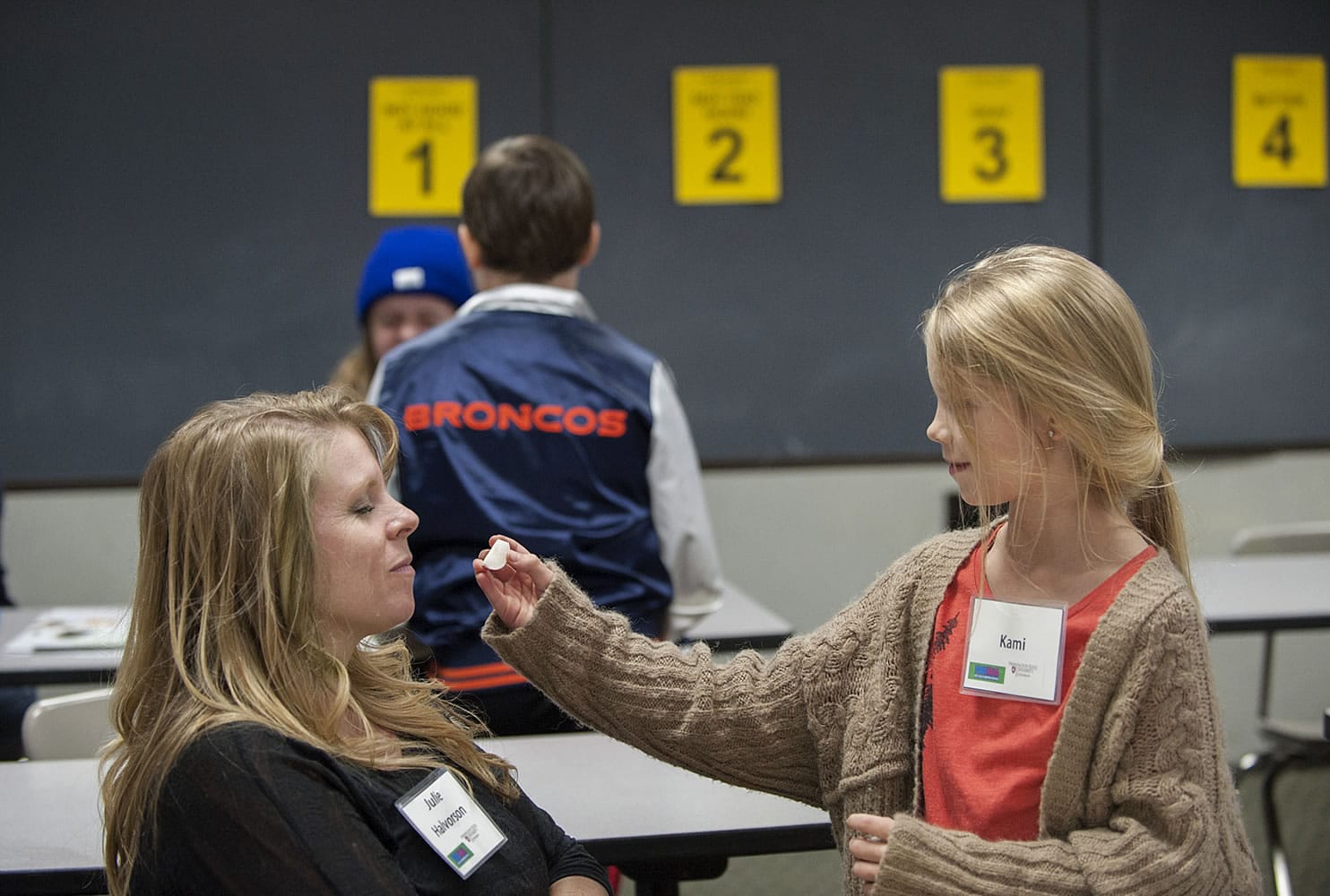Children in the U.S. are exposed to 30 to 50 hours of food advertisements each year on television.
Those ads — which amount to 21 food ads per day for kids ages 8 to 12, or more than 7,600 ads every year — are predominantly pitching unhealthy food, with 34 percent for candy and snacks, 28 percent for cereal and 10 percent for fast food, according to research compiled by the American Psychological Association.
In contrast, 4 percent of the ads are for dairy products and 1 percent for fruit juice. None are for fresh fruits and vegetables, the association reported.
Research has shown food industry advertising that targets youth is linked to the increase in childhood obesity. In addition, research has found that targeted advertising influences children’s product preferences, according to the association.
Organizers behind a multiyear collaboration between Washington State University and the University of Washington say they hope a project they’re spearheading will give parents and children the tools they need to see through food advertising and recognize the influence it has on their food decisions. The goal is to develop a curriculum that can be used across the country.
“Bottom line is, we want to reduce obesity among kids,” said Sandy Brown, food safety and nutrition faculty at the WSU Clark County Extension. “And the media hype is around the processed food.”
The project is a collaboration between the University of Washington, Washington State University Extension, the WSU communications college and WSU’s department of human development. The project is available in five counties: Clark, Pierce, Grant, Chelan and Spokane.
Three years ago, the group launched the project, but hadn’t named it. During focus groups the first year, a Vancouver eighth-grader suggested the project be named FoodMania. He thought the name captured the feeling of constant bombardment of messages encouraging people to eat.
“It seemed to resonate with a lot of people,” Brown said.
So the suggestion became the official project name, FoodMania: Kids & Food in a Marketing-Driven World.
Now in its third year, the project offers a series of six weekly classes for parents and their children ages 9 to 14. Each class begins with dinner, then the parents and kids are split into groups. Each receives hands-on lessons about the week’s topic, before joining for a final discussion about what each group learned.
The topics include recognizing the pressure to eat, advertising’s impacts on body image, understanding product packaging, food engineering for advertisements and recognizing how marketing has altered perspectives.
“Each lesson takes a different facet of marketing,” Brown said. “And then, we try to intertwine the nutrition pieces.”
Heather Yost of Vancouver decided to sign up for the class with her 14-year-old daughter, Madison Boothe. Yost’s son, 9-year-old Jacob Boothe, is also participating. His cousin Emily Schmitz is his adult partner for the class.
“I thought it would be a good learning experience for the kids,” Yost said.
During Wednesday evening’s session, Yost, Schmitz and the other adults discussed how products are packaged, and how to understand the nutrition labels and ingredient lists. Food packages, the adults said, include nutrition buzzwords that can be misleading or confusing, such as “natural,” which has not been defined by the Food and Drug Administration.
The adults also agreed that nutrition labels can be misleading because there are no guidelines or requirements on serving sizes. The group then split into pairs and tried deciphering the labels of several popular products.
“Our purchasing habits have to be in reading and understanding these labels,” Brown told the group.
In the next room, the youth were learning about food packaging, as well. The children rated cereal packages based on their use of cartoon characters, kid-friendly pictures, colors, attention-grabbing words and overall look. They discovered some of the least nutritious cereals with the highest sugar contents scored highest, while the healthier versions scored lower. They then put that knowledge to use and created their own food packages for fresh fruits and vegetables.
Three weeks into the series, Schmitz said she has found the information interesting. The exercises have made her more aware of the importance of talking with the kids about food choices, she said.
“It’s been cool to have them expose us and bring talking points,” Schmitz said.
The curriculum made Missy Cummins — 4-H faculty for the WSU Extension and instructor for the youth sessions — realize the importance of discussing media influence with her own children, she said. Parents talk with their kids about sex, tobacco and drugs, but they don’t always think about media influence, she said.
“We should be having these conversations with kids,” Cummins said.




